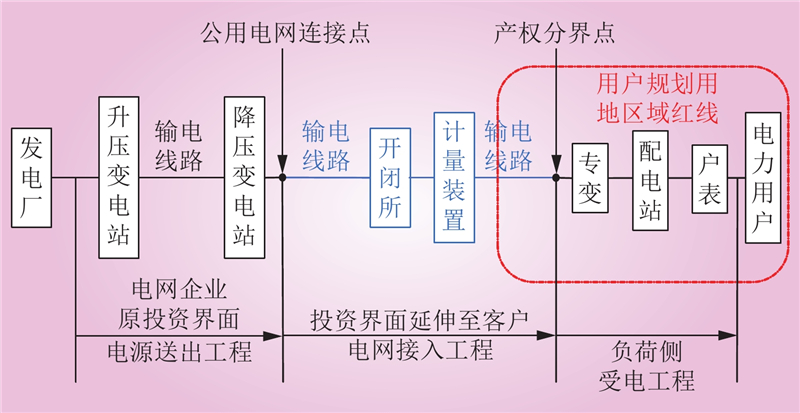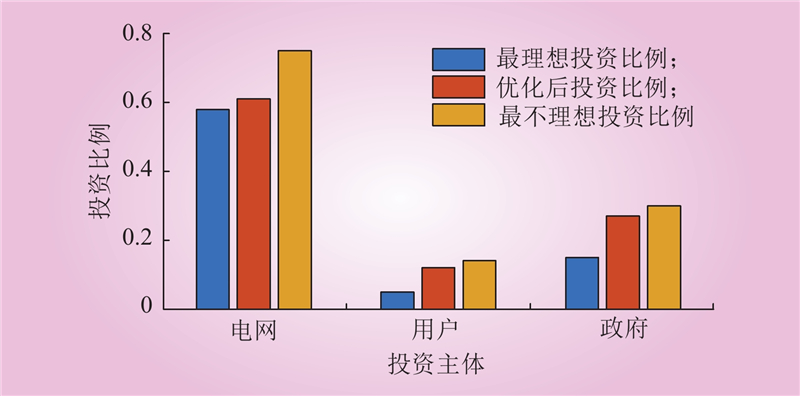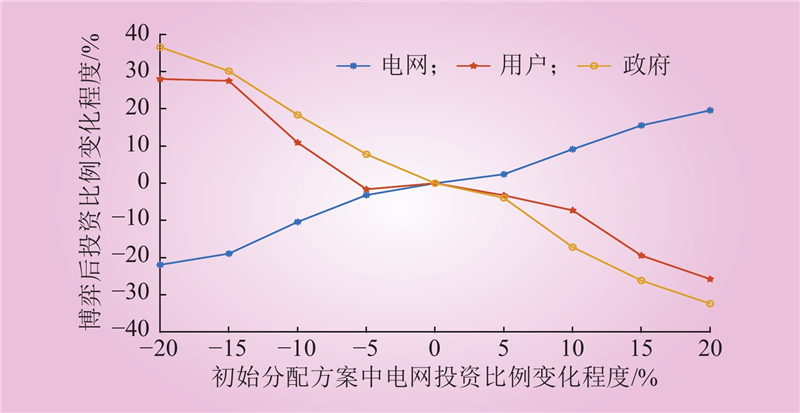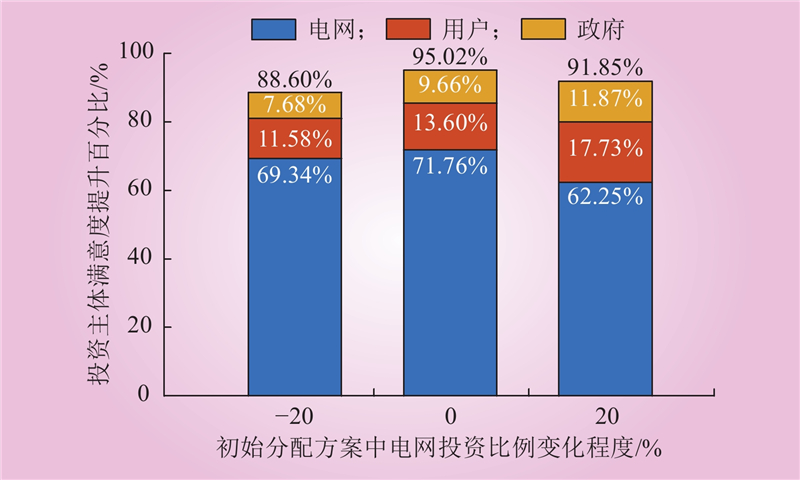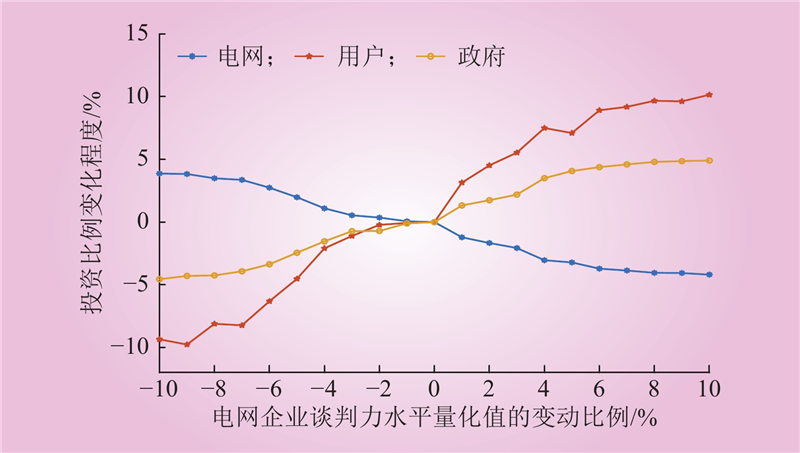| 1 |
国家发展改革委, 财政部, 国家能源局, 等. 关于清理规范城镇供水供电供气供暖行业收费促进行业高质量发展意见的通知[EB/OL]. (2020-12-23). http://www.gov.cn/gongbao/content/2021/content_5581066.htm.
|
| 2 |
国家发展改革委, 国家能源局. 关于全面提升“获得电力”服务水平持续优化用电营商环境的意见[EB/OL]. (2020-09-25).https://www.ndrc.gov.cn/xxgk/zcfb/ghxwj/202009/t20200925_1239593.html?code=&state=123.
|
| 3 |
国家发展改革委, 国家能源局. 关于开展水电气暖领域涉企违规收费自查自纠工作的通知[EB/OL]. (2022-07-16). http://www.gov.cn/zhengce/zhengceku/2022-07/27/content_5703033.htm.
|
| 4 |
杭州市发展和改革委员会, 杭州市财政局, 杭州市市场监督管理局, 等. 杭州市本级电网接入工程费用分担机制实施办法 [EB/OL]. (2022-06-30). http://www.hangzhou.gov.cn/art/2022/6/30/art_1229063429_4061091.html.
|
| 5 |
阳泉市人民政府. 关于印发阳泉市全面提升“获得电力”服务水平延伸电力工程投资界面实施方案(试行)的通知[EB/OL]. (2022-07-08). http://xxgk.yq.gov.cn/yqsrmzf1/fdzdgknr_45346/lzyj/szfbgswj/202207/t20220708_1361492.shtml.
|
| 6 |
孙乐平, 郭小璇, 韩帅, 等. 增量配电放开背景下基于合作博弈的多主体投资比例优化策略[J]. 电网技术, 2020, 44 (10): 3916- 3926.
DOI
|
|
SUN Leping, GUO Xiaoxuan, HAN Shuai, et al. Multi-agent investment proportion optimization based on cooperative game under incremental distribution liberalization[J]. Power System Technology, 2020, 44 (10): 3916- 3926.
DOI
|
| 7 |
王绵斌, 谭彩霞, 刘宣, 等. 多投资主体合作的增量配网差异化运营策略[J]. 电力系统及其自动化学报, 2021, 33 (5): 77- 85, 112.
DOI
|
|
WANG Mianbin, TAN Caixia, LIU Xuan, et al. Differentiated operation strategy for incremental distribution network in cooperation with multiple investment entities[J]. Proceedings of the CSU-EPSA, 2021, 33 (5): 77- 85, 112.
DOI
|
| 8 |
李咸善, 解仕杰, 方子健, 等. 多微电网共享储能的优化配置及其成本分摊[J]. 电力自动化设备, 2021, 41 (10): 44- 51.
DOI
|
|
LI Xianshan, XIE Shijie, FANG Zijian, et al. Optimal configuration of shared energy storage for multi-microgrid and its cost allocation[J]. Electric Power Automation Equipment, 2021, 41 (10): 44- 51.
DOI
|
| 9 |
SIMON V, JONAS H, ABUZAR K, et al. Sharing congestion management costs among system operators using the Shapley value[J]. Applied Energy, 2022, 317: 119039 .
|
| 10 |
黄南天, 包佳瑞琦, 蔡国伟, 等. 多主体联合投资微电网源-储多策略有限理性决策演化博弈容量规划[J]. 中国电机工程学报, 2020, 40 (4): 1212- 1225, 1412.
|
|
HUANG Nantian, BAO Jiaruiqi, CAI Guowei, et al. Multi-agent joint investment microgrid source-storage multi-strategy bounded rational decision evolution game capacity planning[J]. Proceedings of the CSEE, 2020, 40 (4): 1212- 1225, 1412.
|
| 11 |
王永利, 王硕, 郑燕, 等. 基于弹性网络的电网工程运行维护成本分摊计算[J]. 电力系统自动化, 2020, 44 (20): 165- 172.
DOI
|
|
WANG Yongli, WANG Shuo, ZHENG Yan, et al. Calculation and allocation of operation and maintenance cost of power grid project based on elastic net[J]. Automation of Electric Power Systems, 2020, 44 (20): 165- 172.
DOI
|
| 12 |
SAMUEL O, JAVAID N, KHALID A, et al. Towards real-time energy management of multi-microgrid using a deep convolution neural network and cooperative game approach[J]. IEEE Access, 2020, 8, 161377- 161395.
DOI
|
| 13 |
帅轩越, 王秀丽, 原晟淇, 等. 电力市场环境下基于改进纳什议价方法的多微网能源交易机制设计[J]. 西安交通大学学报, 2021, 55 (11): 97- 105.
DOI
|
|
SHUAI Xuanyue, WANG Xiuli, YUAN Shengqi, et al. Design of multi-microgrid energy trading mechanism based on improved Nash bargaining method in electricity market environment[J]. Journal of Xi'an Jiaotong University, 2021, 55 (11): 97- 105.
DOI
|
| 14 |
AN Q, WANG P, SHI S. Fixed cost allocation for two-stage systems with cooperative relationship using data envelopment analysis[J]. Computers & Industrial Engineering, 2020, 145, 106534.
|
| 15 |
李影, 张鹏. 基于网络DEA和Shapley值的产学研科技创新效率研究[J]. 科技管理研究, 2022, 42 (5): 93- 103.
DOI
|
|
LI Ying, ZHANG Peng. Research on the innovation efficiency of industry-university-research based on network DEA and shapley value[J]. Science and Technology Management Research, 2022, 42 (5): 93- 103.
DOI
|
| 16 |
郑小雪, 刘志, 李登峰, 等. 基于多选择目标规划方法的生产者责任组织成本分摊合作博弈研究[J]. 系统工程理论与实践, 2021, 41 (10): 2512- 2523.
DOI
|
|
ZHENG Xiaoxue, LIU Zhi, LI Dengfeng, et al. Research on cooperative game for cost sharing of producer responsibility organization based on multi-choice goal programming method[J]. Systems Engineering-Theory & Practice, 2021, 41 (10): 2512- 2523.
DOI
|
| 17 |
饶卫振, 段忠菲, 朱庆华. 一种均衡协作配送子联盟满意度的成本分摊方法[J]. 系统工程学报, 2021, 36 (4): 476- 494.
DOI
|
|
RAO Weizhen, DUAN Zhongfei, ZHU Qinghua. A cost allocation method for balancing the satisfaction of cooperative distribution sub-alliances[J]. Journal of Systems Engineering, 2021, 36 (4): 476- 494.
DOI
|
| 18 |
郭炜恒, 梁樑. 供应链碳减排成本分摊的合作博弈研究[J]. 预测, 2021, 40 (2): 83- 89.
|
|
GUO Weiheng, LIANG Liang. Research on cooperative game of supply chain cost sharing in carbon emission reduction[J]. Forecasting, 2021, 40 (2): 83- 89.
|
| 19 |
杨志君. 如何推进业扩工程投资界面廷伸工作[J]. 电子测试, 2015, (24): 134- 136.
DOI
|
|
YANG Zhijun. How to promote business expansion project investment interface the extensions work[J]. Electronic Test, 2015, (24): 134- 136.
DOI
|
| 20 |
李林威, 赵喆, 刘帮成. “放管服”背景下我国电力体制改革成效评估及优化路径研究: 基于重庆市1486家用电企业电力面板数据分析[J]. 公共行政评论, 2021, 14 (5): 140- 158, 199.
DOI
|
|
LI Linwei, ZHAO Zhe, LIU Bangcheng. Research on the effectiveness and optimization path of power system reform under the background of "delegating regulating-servicing" reform: an analysis of power panel data from 1486 electric enterprises in Chongqing[J]. Journal of Public Administration, 2021, 14 (5): 140- 158, 199.
DOI
|
| 21 |
钱唯克, 陈启昉, 陈凯玲, 等. 优化营商环境背景下用户电力接入工程收费政策调整分析[J]. 企业改革与管理, 2020, (19): 213- 214.
DOI
|
| 22 |
程曦, 吴霜, 王静怡, 等. 输配电价改革背景下电网项目多阶段投资优化决策研究[J]. 电力系统保护与控制, 2021, 49 (15): 116- 123.
DOI
|
|
CHENG Xi, WU Shuang, WANG Jingyi, et al. Research on multi-stage investment optimization of power grid projects under transmission and distribution price reform[J]. Power System Protection and Control, 2021, 49 (15): 116- 123.
DOI
|
| 23 |
代业明, 齐尧, 孙锡连. 基于预测惩罚和联盟嫉妒的分布式能源合作博弈模型[J]. 管理工程学报, 2023, 37 (2): 174- 182.
DOI
|
|
DAI Yeming, QI Yao, SUN Xilian. Cooperative game model in distributed power plants based on prediction penalty and alliance envy[J]. Journal of Industrial Engineering and Engineering Management, 2023, 37 (2): 174- 182.
DOI
|
| 24 |
刘泽源, 刘俊勇, 刘继春, 等. 基于Nash-Harsanyi博弈理论的多主体联盟利益分配方法[J/OL]. 电测与仪表: 1–11[2023-02-15]. http://kns.cnki.net/kcms/detail/23.1202.TH.20220602.1700.008.html.
|
|
LIU Zeyuan, LIU Junyong, LIU Jichun, et al. Profit allocation method of coalition including multi-energy based on Nash-Harsanyi game theory[J/OL]. Electrical Measurement & Instrumentation: 1–11[2023-02-15]. http://kns.cnki.net/kcms/detail/23.1202.TH.20220602.1700.008.html.
|
| 25 |
刘明华, 刘文霞, 刘晨苗, 等. 基于全息风险评估和组合赋权的电网建设项目投资决策方法[J]. 现代电力, 2019, 36 (5): 87- 94.
DOI
|
|
LIU Minghua, LIU Wenxia, LIU Chenmiao, et al. Investment decision method for power grid construction projects based on holographic risk assessment and combination weighting[J]. Modern Electric Power, 2019, 36 (5): 87- 94.
DOI
|
| 26 |
刘娜娜, 周国华. 重大工程多主体协同合作利益分配及创新激励机制研究[J]. 工业工程与管理, 2023, 28 (4): 148- 155.
DOI
|
|
LIU Nana, ZHOU Guohua. Study on surplus division and innovation incentives of multi-agent cooperation in megaprojects[J]. Industrial Engineering and Management, 2023, 28 (4): 148- 155.
DOI
|



